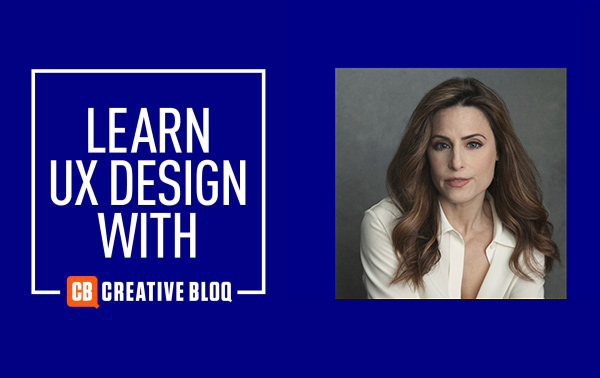Don't call it UX design!

UX design is a growing area that's attracting a lot of attention, particularly in the digital sphere as brands realise that the user's experience of their websites and apps is part of their branding identity and can impact on conversions. But is the term 'user experience design' appropriate?
The Harvard-educated cultural anthropologist, Google executive and public speaker Abigail Posner is a contributor to our online UX Design course, UX Design Foundations. She takes an anthropological, human-centred approach that reminds us that we need to think about who we're designing for.
Her big tip for successful user experience design? Stop using the word 'user' for a start! Don't forget that you can learn more from Posner and other experts on UX Design Foundations. Make sure you complete our quick two-minute survey for a chance to win a place on the course.

Despite working in user experience, Posner doesn't like that term. Instead of the word 'user'. The director of Creative Works at Google prefers to say 'human', which is, after all, what the user is, unless you're really designing a product to be used by bots. "Language is culture, that's anthropology 101," she says. "Once you actually change the language you realise how important a word can mean. So I like to say the human being who leverages this technology."
Posner insists that this is more than just semantics. She says the problem with the word user is that it puts the focus on one limited aspect of a person's behaviour: the moment when they interact with a product. What we really need to design better user (or human) experience is to learn more about the person away from the product as well, taking into account their values and concerns, interests, passions and backgrounds.
"When we use the word 'user' it implies just when that person is using that device. The device is the story; the user is just the person who uses it. So if we take away that word and think about the human being then the kind of research that we would use would be much broader, much deeper, and therefore really allow us to understand the human being who uses that technology or uses that software."

Posner's approach to human-centred UX design sets out from considering the role that the product being designed will perform for the person who will use it. "When I consider actually the making of anything, whether it's a piece of technology, a piece of furniture, I always ask, what is the role that it's going to play in culture and what is it that human beings really need from it?" she says.
Daily design news, reviews, how-tos and more, as picked by the editors.
This comes from her background as an anthropologist, which may mean she approaches things differently to a designer. She compares how an anthropologist, an engineer and an interior designer would approach designing a table as an example. "We all have the same brief, but we would all approach it differently," she says.
"The engineer would probably think of the ergonomics of the table vis-a-vis the room vis-a-vis the person and make sure the measurements totally fit. The designer may think about how the design of the table should reflect the aesthetics of the room. An anthropologist or someone who thinks from a humanistic standpoint would think about the role of the table in people's lives. How does it serve us? What's the value that it gives us? How do we use it in various ways?"
The big focus is to think about the purpose of what's being created for the person who will use it. "How is it going to make that human being that much more productive, successful, happy, what is its purpose for that human being to succeed in life?"
For Posner then, UX design is much more about understanding people than understanding devices, interfaces, styles or trends. And that demands deep research (see out tips for UX research and testing). "By really digging in and trying to unearth who this human being is, what makes that person tick, what makes that person get angry, upset, excited, happy, joyful, you can empathise with that person because you get the full story."

Learn from Abigail Posner about how UX should benefit the individual by enrolling on our online UX design foundations course.
Read more:

Joe is a regular freelance journalist and editor at Creative Bloq. He writes news, features and buying guides and keeps track of the best equipment and software for creatives, from video editing programs to monitors and accessories. A veteran news writer and photographer, he now works as a project manager at the London and Buenos Aires-based design, production and branding agency Hermana Creatives. There he manages a team of designers, photographers and video editors who specialise in producing visual content and design assets for the hospitality sector. He also dances Argentine tango.
